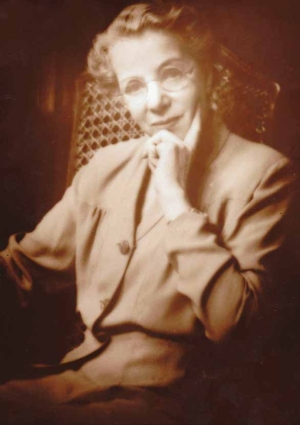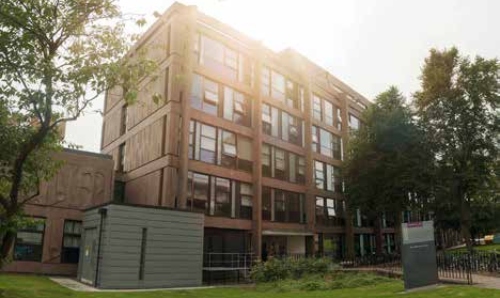History of Audiology
The first Department of Education of the Deaf was established at the Victoria University of Manchester, now The University of Manchester, in 1919 using funds donated by cotton magnate James Jones. Jones’s son, Ellis Llwyd Jones, was deaf and had died from illness the previous year.
The first Ellis Llwyd Jones lecturer was Irene Goldsack, former headmistress of the Henry Worral School for deaf infants, who was noted for combining oralist tenets with a progressive, holistic approach to teaching. This would become the basis of the Department’s educational philosophy. The new Department offered qualifications in deaf education, combining theory subjects with practice classes at the Old Trafford Royal Schools for the Deaf. Seven students enrolled in the first year.

The class of 1921 included Alexander Ewing, who had been a teacher of the deaf in Edinburgh. In 1922, Alexander Ewing and Irene Goldsack married and became known as “The Ewings.” (When Irene retired in 1949, Alex succeeded her as Department Head.) The Ewings were also especially known for their 1944 Distraction Test: an audiometric test which used “meaningful sounds” (sounds which piqued children’s attention and approximated human speech frequencies) to build a picture of hearing capacity.
Physicist Thomas Simm Littler joined the Department in 1933. Littler developed hearing technologies, including classroom aids and the MEDRESCO hearing aid, distributed by the NHS from the 1950s to the 1970s. Littler and Alex Ewing’s research contributed to occupational deafness being formally recognised as an industrial hazard in 1969. The British Society of Audiology awards the Thomas Simm Littler Prize and Lectureship in recognition. Alex Ewing gave the first lecture in 1971.
On his retirement in 1964, Alex Ewing chose Ian Taylor as his successor, a medically-trained lecturer in clinical audiology. Taylor expanded the Department’s clinical work and teaching, adding programmes in speech pathology (headed by Betty Byers Brown) and medical audiology. It was also renamed the Department of Audiology and Education of the Deaf. The Department was especially noted for its A-clinic – a specialist referral centre seeing more than 3,000 patients with complex communication problems each year.
After Taylor’s retirement in 1988, Pediatric Audiologist John Bamford became the new Head and the Department was renamed the Centre for Audiology, Education of the Deaf and Speech Pathology. Adrian Davis, Kai Uus, Bamford and other Faculty members developed a newborn infant screening programme which was extended across the UK by 2005. In 2008, Bamford retired and the role of Head of the Centre was separated from that of Head of the Audiology and Deafness Research Group. Acoustic Psychophysicist Chris Plack took over the Ellis Llwyd Jones Professorship, with Cochlear Implant Specialist Colette McKay leading the research group, and Amy McLauchlan as Director of Teaching. Speech pathology became a separate group under Gina Conti-Ramsden.

The Department of Health’s policy to streamline NHS professions’ training into a basic science programme and the tightening economy created anxious times. Staff appealed to the University to retain the threatened audiology programme.
The Centre emerged from those difficulties with increased staff and student numbers and renewed research activities. Deaf education expert Wendy McCracken was promoted to Professor in 2012: the first professor in that field since Alex Ewing. In 2013, Plack took up a joint appointment with Lancaster University and Paediatric Audiologist Kevin J Munro became the Head of the now Manchester Centre for Audiology and Deafness (ManCAD). Munro’s title of Ewing Professor of Audiology honours the Ewings.
ManCAD has grown since its beginnings with Irene Goldsack in one room. Students studying deaf education are, unlike the Ewings’s students, not likely to teach whole classes of deaf students: nearly 85% of deaf children in the UK now attend mainstream schools. Although ManCAD’s audiological scientists no longer build hearing aids in the basement, as Tom Littler did, Faculty members continue to help people with hearing problems, developing clinical procedures, training audiologists to assess and treat hearing difficulties, deepening understanding of hearing loss, and improving hearing technologies. New research projects may help prevent hearing loss in the first place. An internationally recognised institution, ManCAD draws on over a century of expertise in audiology and deaf education.
